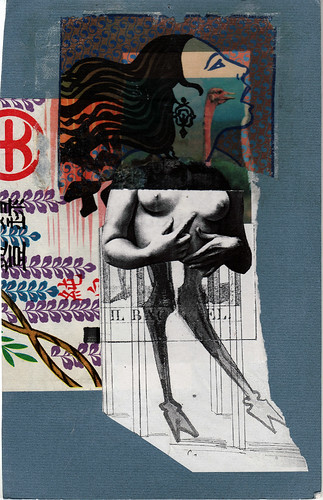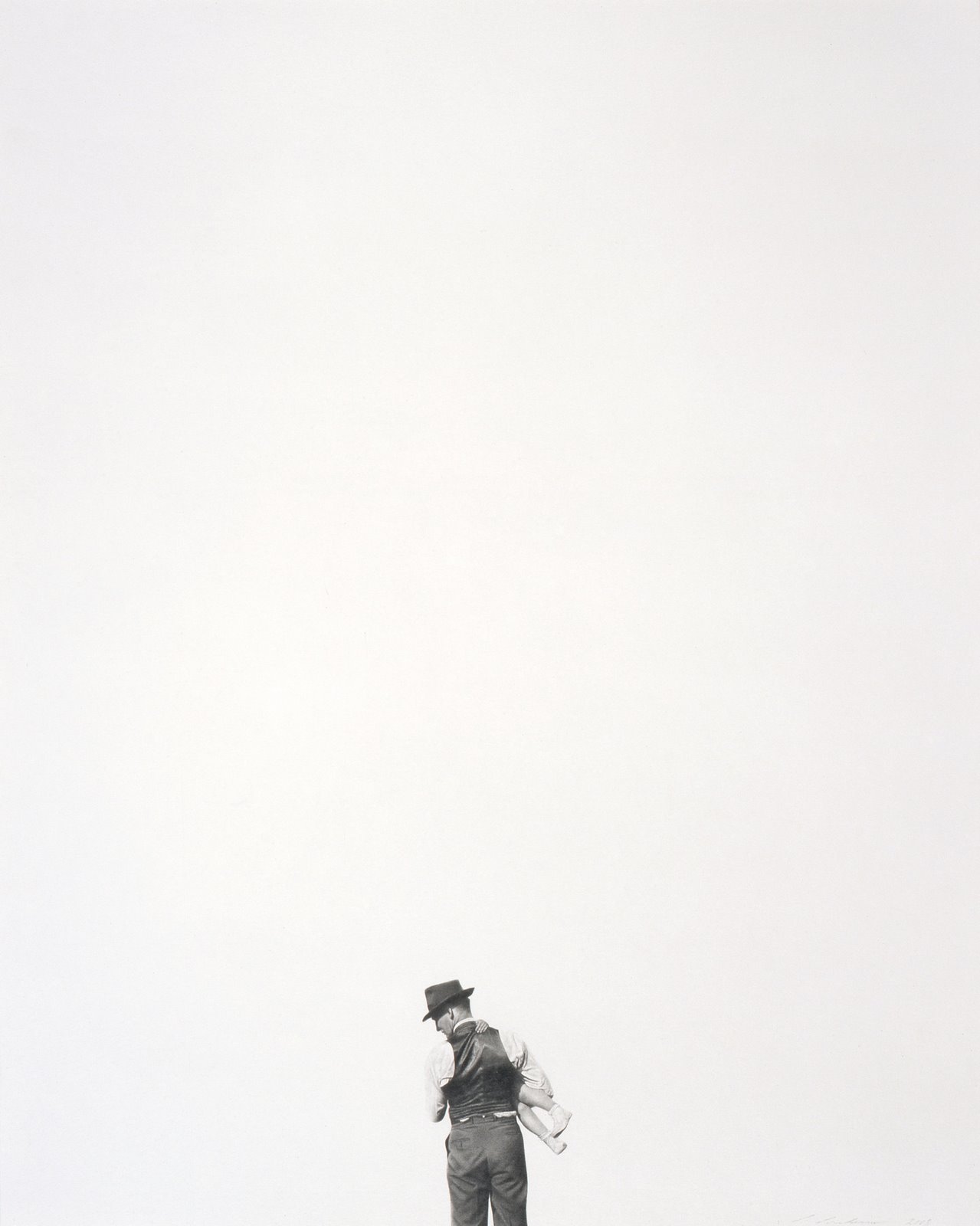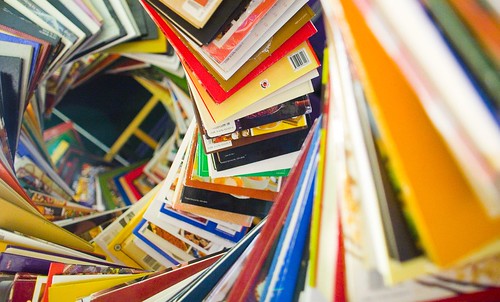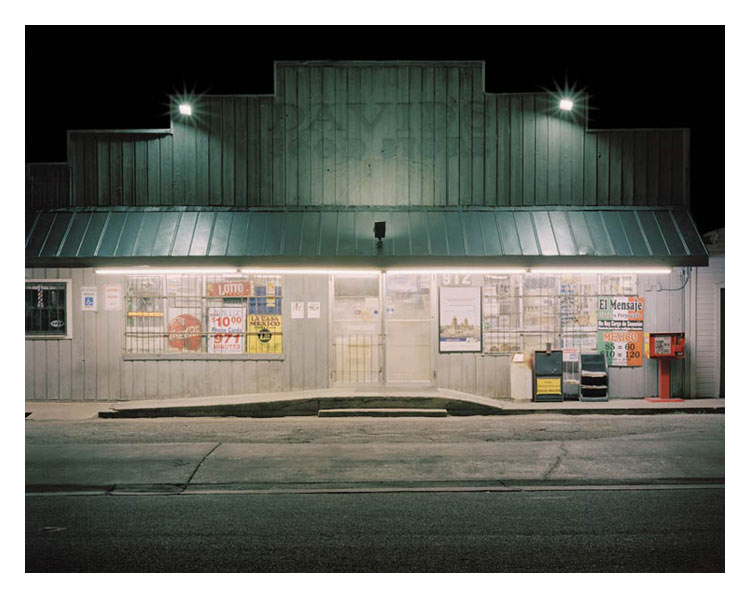
David's Food Store, 2005 photograph by Andy Mattern. Click here to see more images like this.
Andy Mattern is a photographer currently living in Minneapolis. His starkly composed images capture ordinary spaces of our lives as though human presence has been removed. In his work we feel absence and presence with equal weight.
I first met Andy when we went to high school together in Albuquerque, NM. I thought I'd check in and see what he's up to artistically these days.
SA: What kind of camera(s) are you currently using? Traditional film or digital?
AM: For the past few years, I have mainly worked with digital cameras, but I keep a 4x5 and a film cooler on hand just in case. The process of shooting digitally is frenetic and cerebral. I savor that speed and control, but I appreciate the meditative process of large format film, it's like a dream in slow motion. Part of the allure of photography is that there are all these choices of ways in which to work. It's easy to fetishize one method, but each has its benefits and, thankfully, it's not necessary to pick only one.
SA: Your technique is very formal. Is your composition entirely in-camera? Do you do any digital augmentation?
AM: I am not against cropping when necessary, but generally I compose in-camera. I spend a lot of time inspecting the edges and considering the frame as a whole before making a picture. Afterwards, if I notice something in the frame that shouldn't be there, I will remove or replace it. Working on a tripod and making numerous exposures lets me easily edit later.
SA: Why does formalism appeal to you over other techniques?
AM: Photography is an organizing tool for me. I use the camera to collect and consolidate my immediate environment into visual containers. I am not inclined to make abstract pictures because I am preoccupied with looking precisely at what is before me.

Information, 2009 photograph by Andy Mattern. Click here to see more images like this.
SA: How did you become an architectural photographer? Do you continue to do this as a business?
AM: I had been photographing buildings at night in Austin as a way to explore the new city for a few years when a photographer friend of mine referred me to an architect who needed a dusk shot of a new residence. I did the job and ended up getting more work by referral. In the lead up to graduate school, though, I have slowly tapered off my work. For the next three years I intend to focus my efforts on creative projects and teaching.
SA: What role has art played in your daily life in recent years?
AM: I am constantly stopping whatever I'm doing to make a picture. Whether it's with my tiny point-and-shoot camera, which I keep with me, or with one of my more official cameras, I get distracted by things I see and I can't relax until I photograph them.
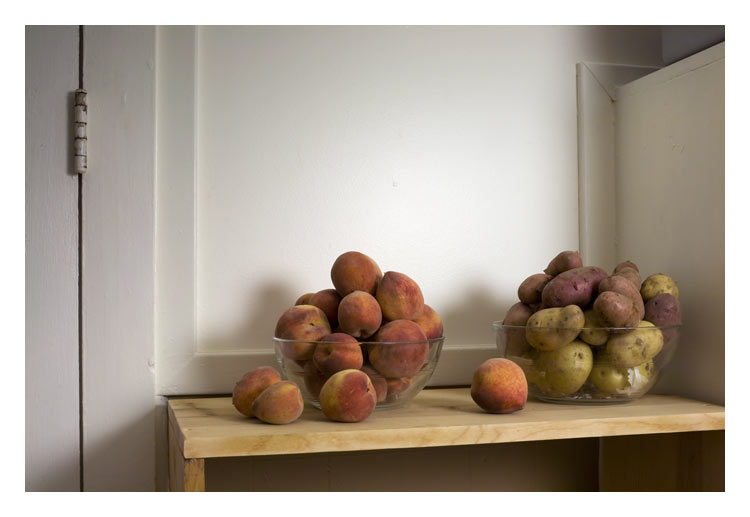
Peaches and Potatoes, 2008 photograph by Andy Mattern. Click here to see more images like this.
SA: The Leland St. series is photographs of your home (I presume). These photographs are less formal than much of your other work, yet they retain a detached, impersonal feel. What was the impetus for this series?
AM: A former professor of mine once said that if you are really good, you never have leave home to make pictures. Maybe Leland St. is an attempt to exercise that idea. As in my other series, I prefer to look directly at my subjects without distortion or visual inflection. I think it's interesting to take a step back and remove the actor from the scene in order to focus on the character of the place and provide room for new narratives to emerge. In the case of photographing my own space, a found a tension between this clinical way of seeing and depicting personal objects like toiletries and dishes. When I review these pictures, they appear to me like crime scene photographs or continuity images from a film set.
SA: You have just moved to Minneapolis. What will you be doing there?
AM: I am starting the MFA program at the University of Minnesota this fall.
SA: What are some of your current influences?
AM: I really like these books right now:
An American Index of the Hidden and Unfamiliar


I'm also taken with these artists: Cara Phillips Michael Vahrenwald Myoung Ho Lee Jake Rowland Dan Boardman
SA: Where can we see your work?
AM: I am always updating my website. But to see physical prints, please visit Stephen Clark Gallery in Austin, Texas. Also, I have a show coming up in Houston this November at the Lawndale Art Center.
---
This post is part of NaBloPoMo for July 2009.


